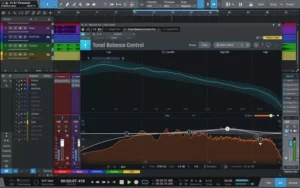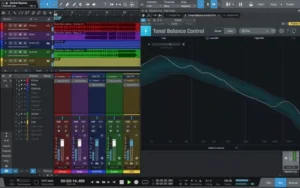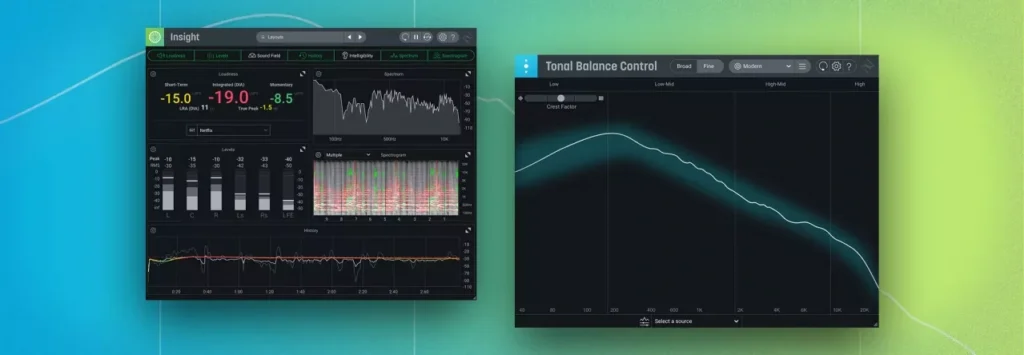Understanding Tonal Balance in Frequency Ranges
Achieving the right tonal balance isn’t one-size-fits-all; what works for one song might not be appropriate for another. The balance depends on the genre, instrumentation, and the overall sound you’re aiming for. Typically, a well-balanced mix has a peak in the lower frequencies with a gentle slope towards the higher frequencies. This shape can be adjusted based on the specific needs of the track and the desired sound.
Tools for Achieving Tonal Balance
Using tools like Tonal Balance Control can help you visualize and adjust the frequency distribution in your mix. This tool allows you to compare your mix against genre-specific target curves derived from thousands of professional tracks. By analyzing the tonal balance in real-time, you can identify frequency buildups or dips that may require adjustment, helping you achieve a more polished and professional mix.
Practical Application in Mixing

To apply tonal balance effectively, it’s crucial to have a rough mix in place before diving into detailed adjustments. Placing EQs on subgroup buses and using tools like Insight alongside Tonal Balance Control can provide a clear view of your mix’s frequency distribution. This setup allows you to make informed decisions about where to apply EQ, whether it’s addressing a low-end buildup or a midrange dip.
Adjusting and Analyzing Tonal Balance
During the mixing process, it’s essential to analyze the most complex sections of your track. For example the final chorus, to see how the frequencies interact. By isolating different frequency ranges, you can identify which elements are contributing to imbalances. Whether it’s the bass overpowering the kick or excessive high-end energy from the vocals, targeted EQ adjustments can help achieve a better tonal balance.
Tips for Maintaining Tonal Balance

While tools like Tonal Balance Control provide valuable insights, the final judgment should always be based on what you hear. Aim for a balanced curve, but avoid striving for a ruler-flat response. Some variation is natural and contributes to the song’s character. Consider the cumulative effect of multiple elements in a frequency range and adjust them subtly to maintain the overall integrity of the mix.
Conclusion: Tonal Balance in Frequency Ranges
Tonal balance is a critical aspect of mixing and mastering that ensures all frequencies in a track are well-represented and cohesive. By using tools and techniques to analyze and adjust your mix, you can create a polished final product that stands out across different playback systems. Ultimately, achieving good tonal balance is a blend of technical know-how and artistic judgment, guided by careful listening and thoughtful adjustments.





